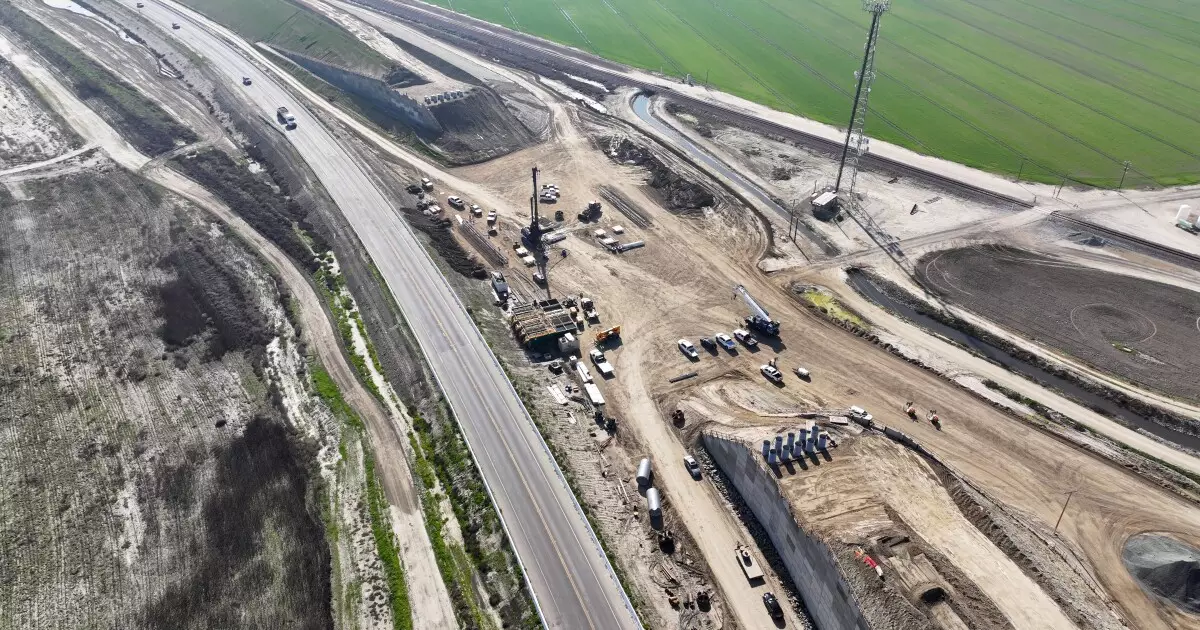The ongoing saga of California’s high-speed rail project is emblematic of government overreach and unchecked optimism overshadowed by strategic incompetence. Once heralded as a transformative infrastructure initiative, it has devolved into a cautionary tale of how political ambitions can derail fiscal responsibility. The recent decision by the Trump administration to rescind $4 billion in federal grants underscores the notion that large-scale public projects, when mismanaged, become intertwined with failure and waste. California’s high-speed rail—initially conceived as a sleek link between Los Angeles and San Francisco—has, over the years, become a symbol of government overpromising and inability to deliver.
While proponents have lauded the project as a game-changer for transportation and environmental sustainability, the reality reveals a staggering failure of execution. The California High-Speed Rail Authority (CHSRA) has repeatedly overpromised on ridership projections and underdelivered on construction milestones. It’s an absurd scenario where billions of taxpayer dollars are funneled into a project that continues to miss deadlines, blow through budgets, and lack a credible plan for completion. The recent federal funding withdrawal is not just an administrative setback; it is a wake-up call that exposes the deep flaws in governance, oversight, and strategic planning that have plagued this initiative from inception.
In essence, the project is a textbook example of political ambition drowning out fiscal prudence. It was sold to voters in 2008 with compelling promises, yet it has morphed into a staggering financial black hole, with costs ballooning from early estimates of $33 billion to an astronomical $128 billion. The failure to control costs and timelines signifies gross mismanagement, yet politicians continue to cling to the illusion that this white elephant can still be saved—despite mounting evidence of its impracticality.
Why California’s High-Speed Rail Is a Symptom of Broader Political Failures
The failure of California’s high-speed rail is more than just an infrastructure setback; it reflects systemic issues within government-funded projects. When political elites prioritize headline-grabbing projects over rigorous planning and fiscal discipline, taxpayers inevitably bear the brunt. The CHSRA’s repeated violations of its own commitments—despite federal reviews confirming the project’s mismanagement—reveal a troubling pattern of overconfidence and underperformance.
Federal authorities, rightly, refuse to keep writing blank checks to a project that continuously fails to meet its obligations. This departure from blindly pouring funds into a bottomless pit marks a sensible shift toward accountability. The Trump administration’s decision to cut off federal aid—though politically contentious—can be seen as a necessary corrective measure against years of mismanagement and overpromising. It underscores a growing recognition that government should not be in the business of subsidizing projects that are fundamentally flawed from the start.
The narrative that California’s leadership will attempt to fight this decision—claiming illegality and threatening legal action—serves only their vested interests. It’s a desperate attempt to shield a failing venture from the consequences of poor planning and political hubris. Meanwhile, the funds that are now being withheld could indeed be better used for infrastructure projects with a higher likelihood of success—roads, ports, or even more targeted transit solutions that serve existing populations without the inflated expectations that have doomed the high-speed rail.
A Political and Economic Reckoning Is Long Overdue
The high-speed rail failure exemplifies how politicized infrastructure projects distort priorities, leading away from transparency and fiscal responsibility. Voter-approved bonds and promises of a future that keeps receding into the horizon have fostered complacency and inflated costs. The truth is that this project has become an emblem of government overreach—an expensive vanity project that prioritized political prestige over practical realities.
Now, as California grapples with its financial obligations, the scramble for alternative funding reveals a deeper issue—namely, that large, expensive projects grounded in overly optimistic assumptions are inherently unsustainable. The recent resistance from the federal government may spark a broader debate about the limits of government in dictating what should be commercial and infrastructural priorities. Effective governance recognizes when the costs outweigh the benefits and adjusts course accordingly.
It is also worth questioning the narrative that private investment will save the day. Relying on the whims of private capital for a project with such entrenched and systemic issues is highly optimistic at best. California’s high-speed rail has become an expensive lesson in the importance of accountability and the dangers of political blind spots. Moving forward, smarter, more accountable governance—perhaps with less hubris—can prevent future boondoggles from wasting taxpayer money on pie-in-the-sky projects that have little chance of success.


Leave a Reply